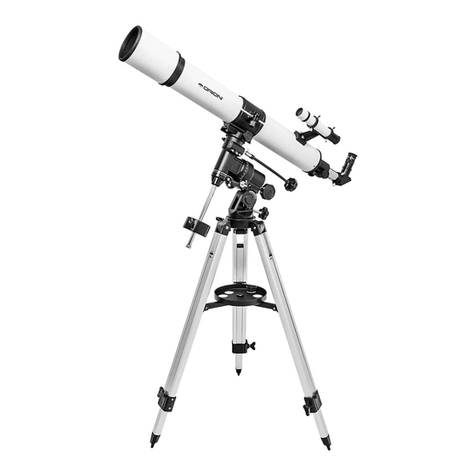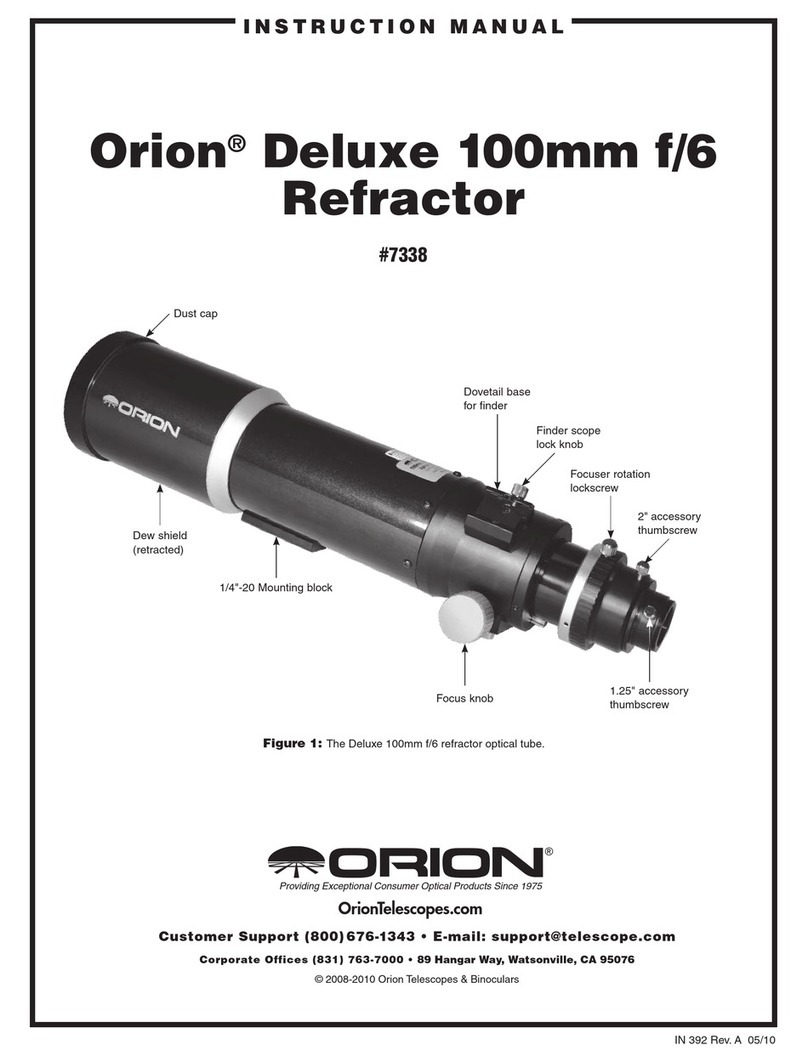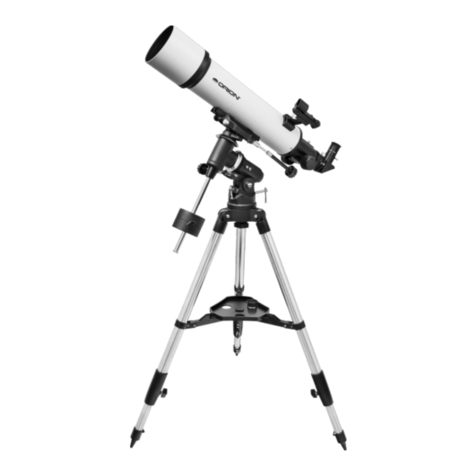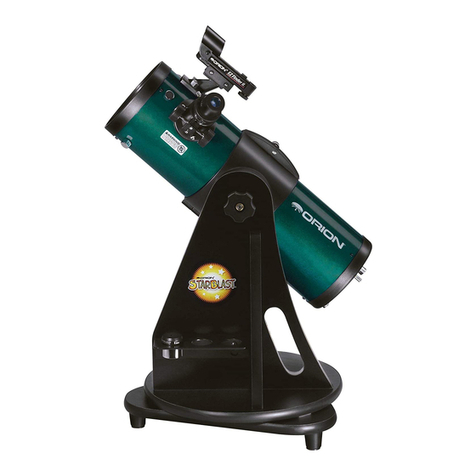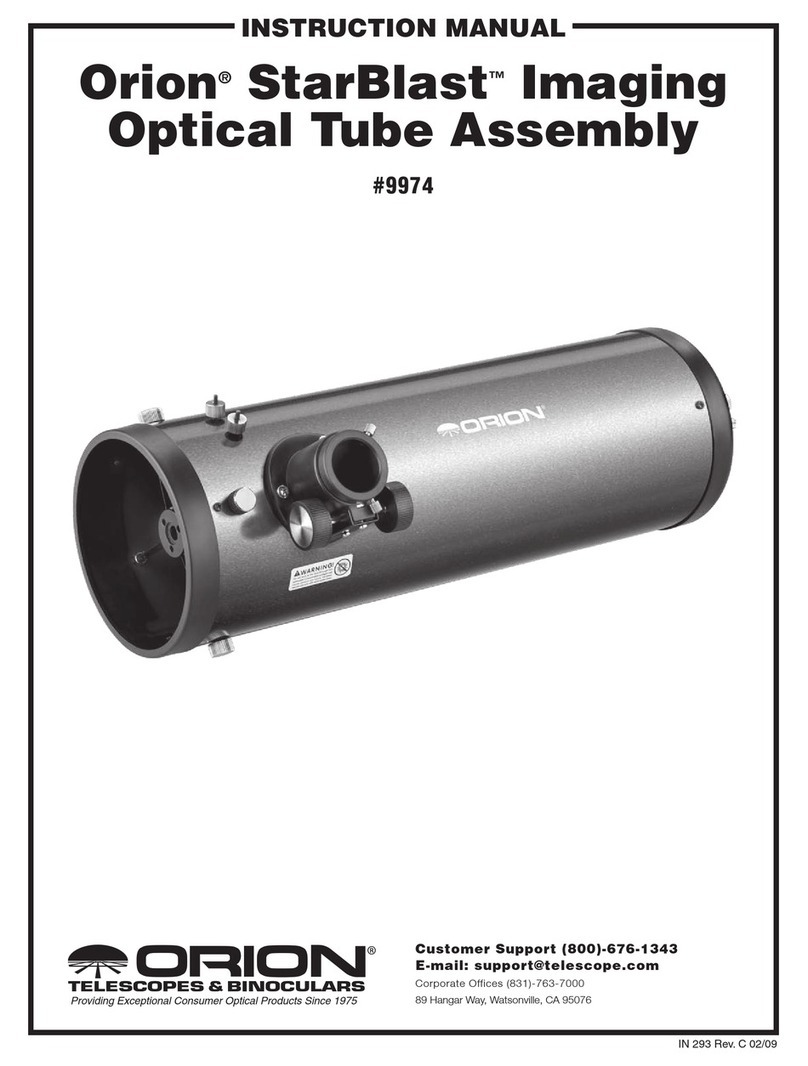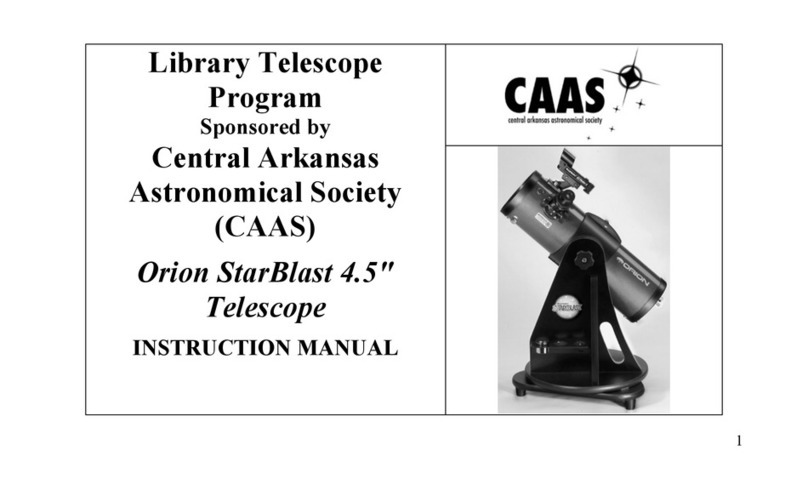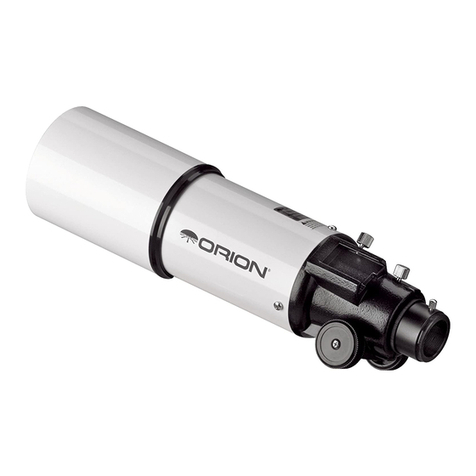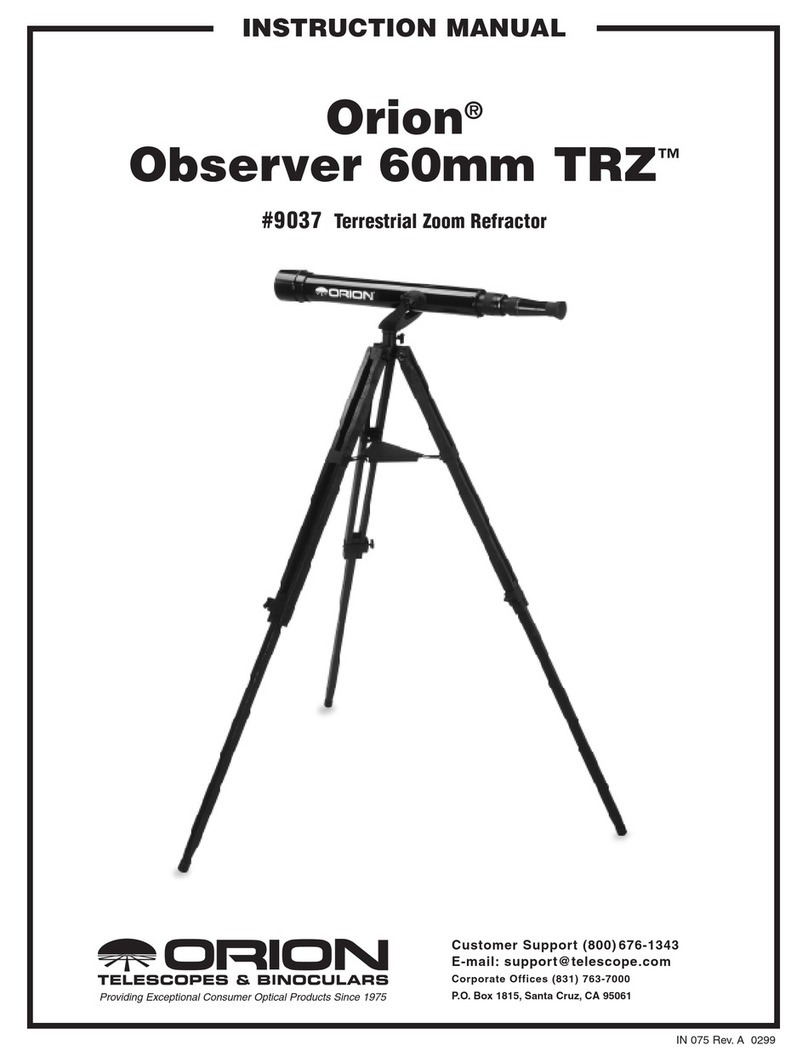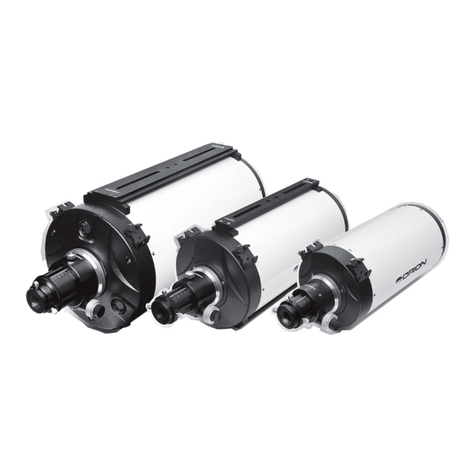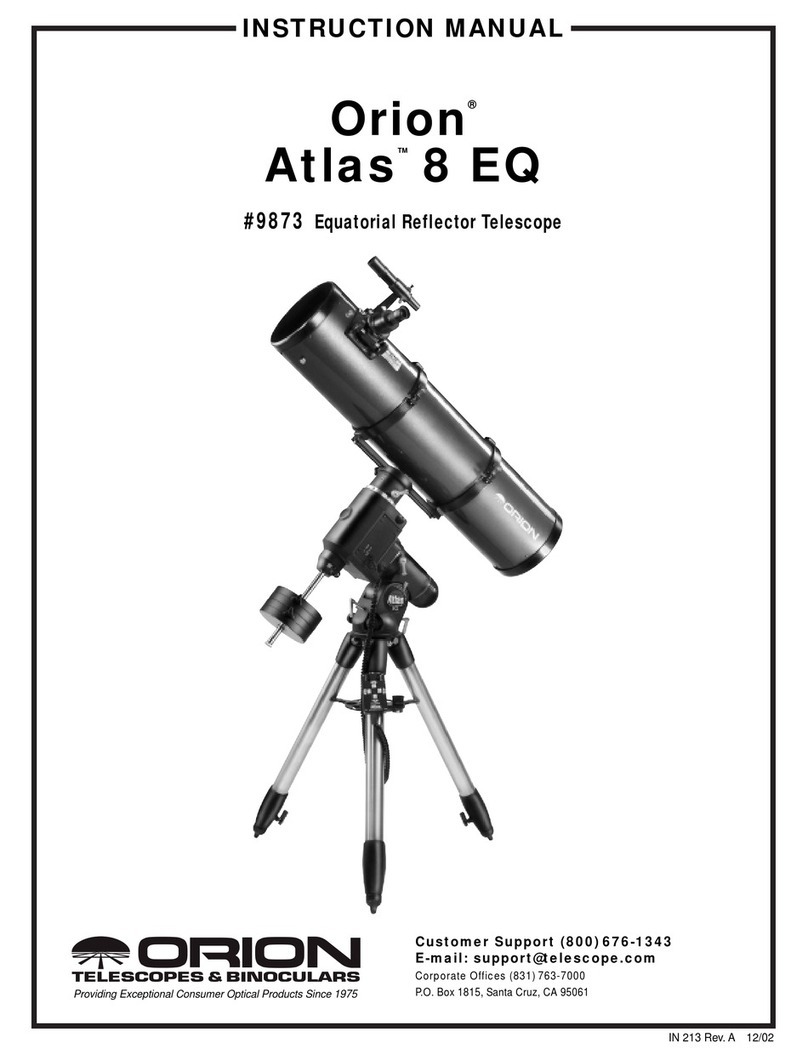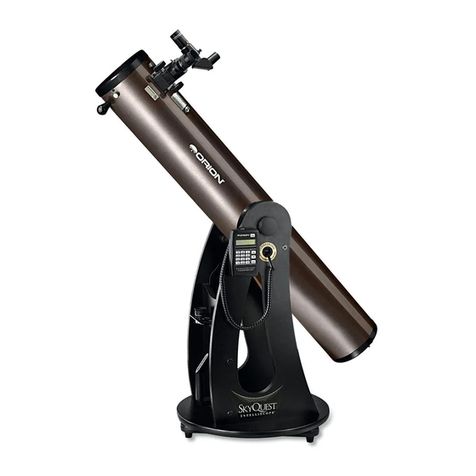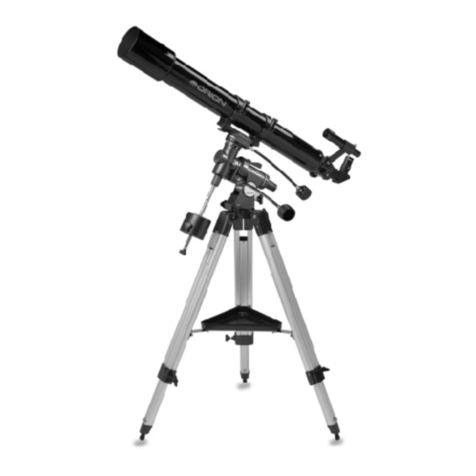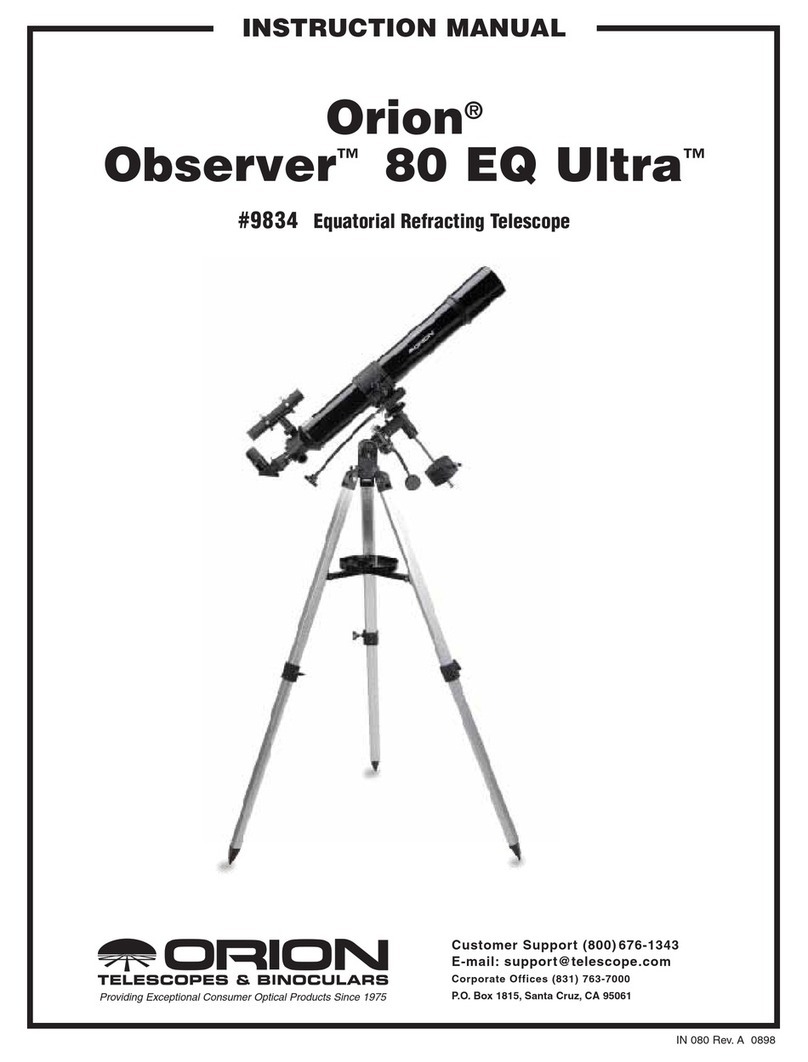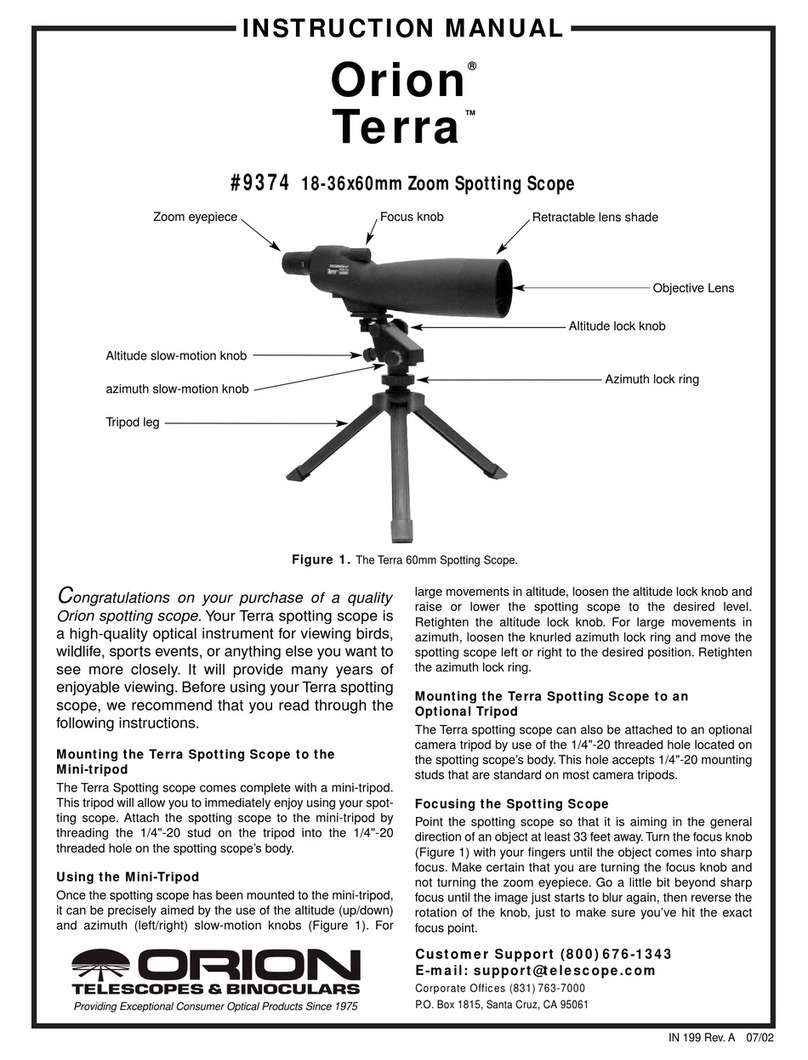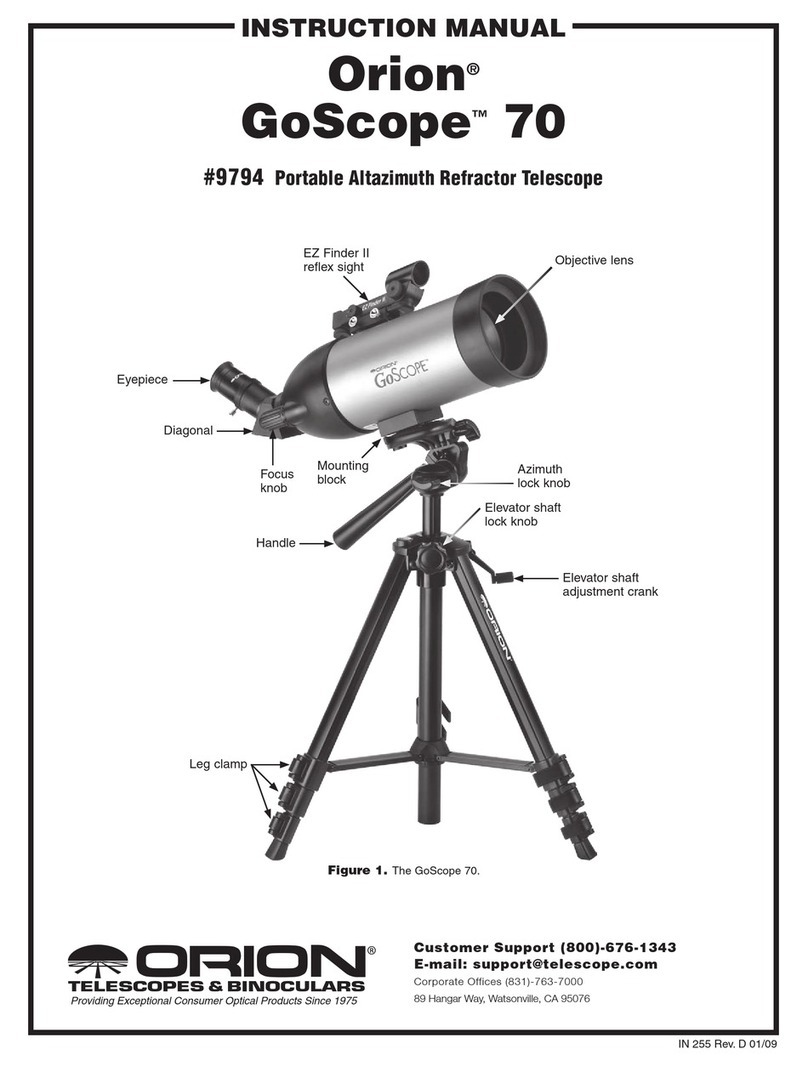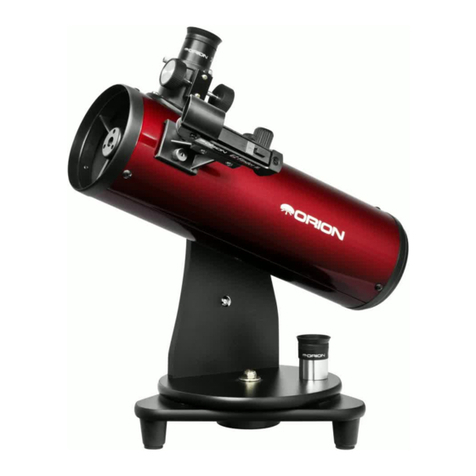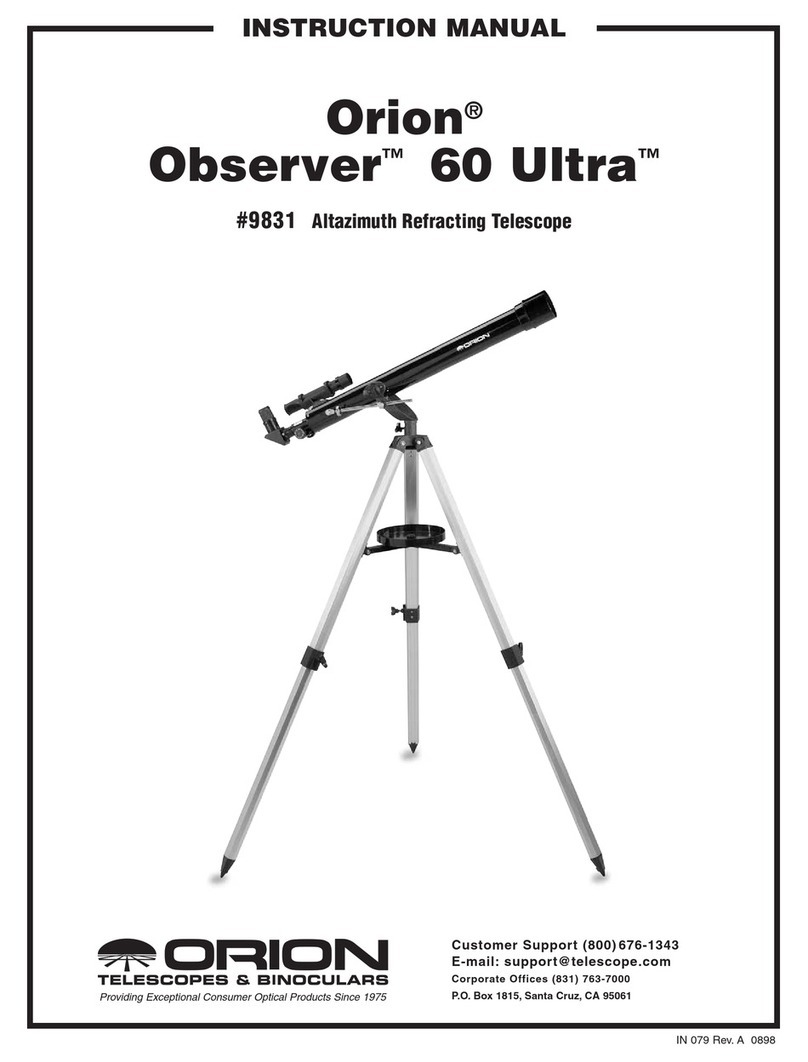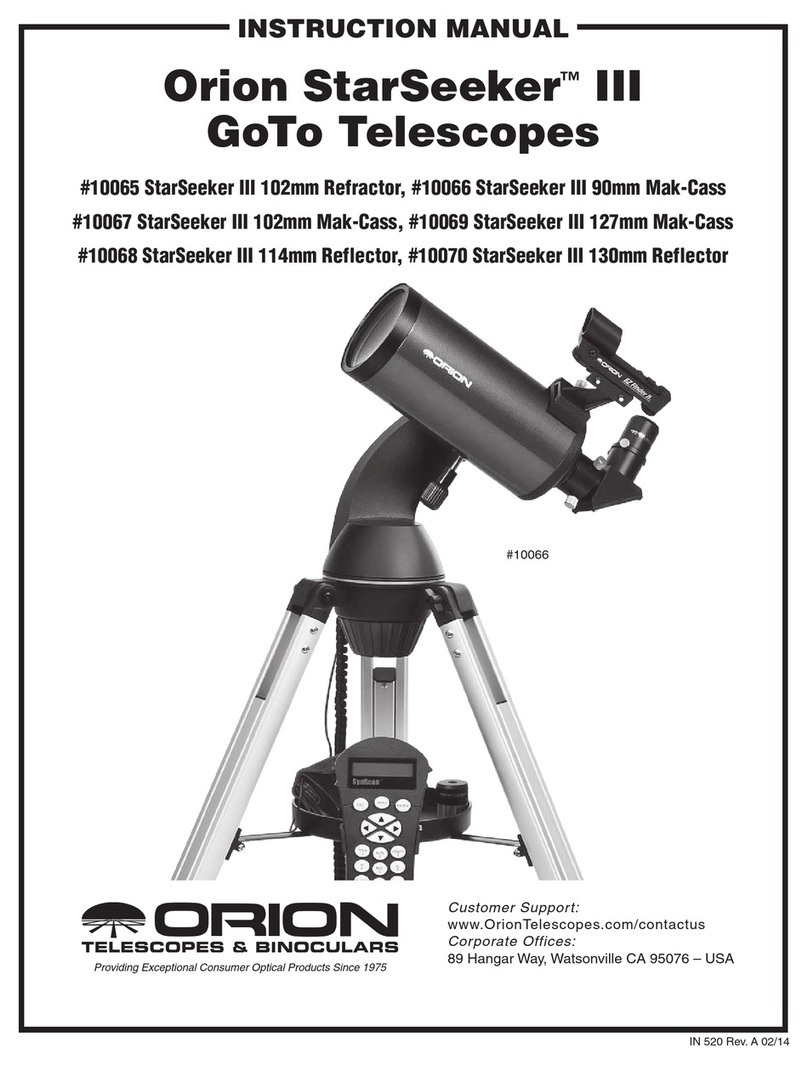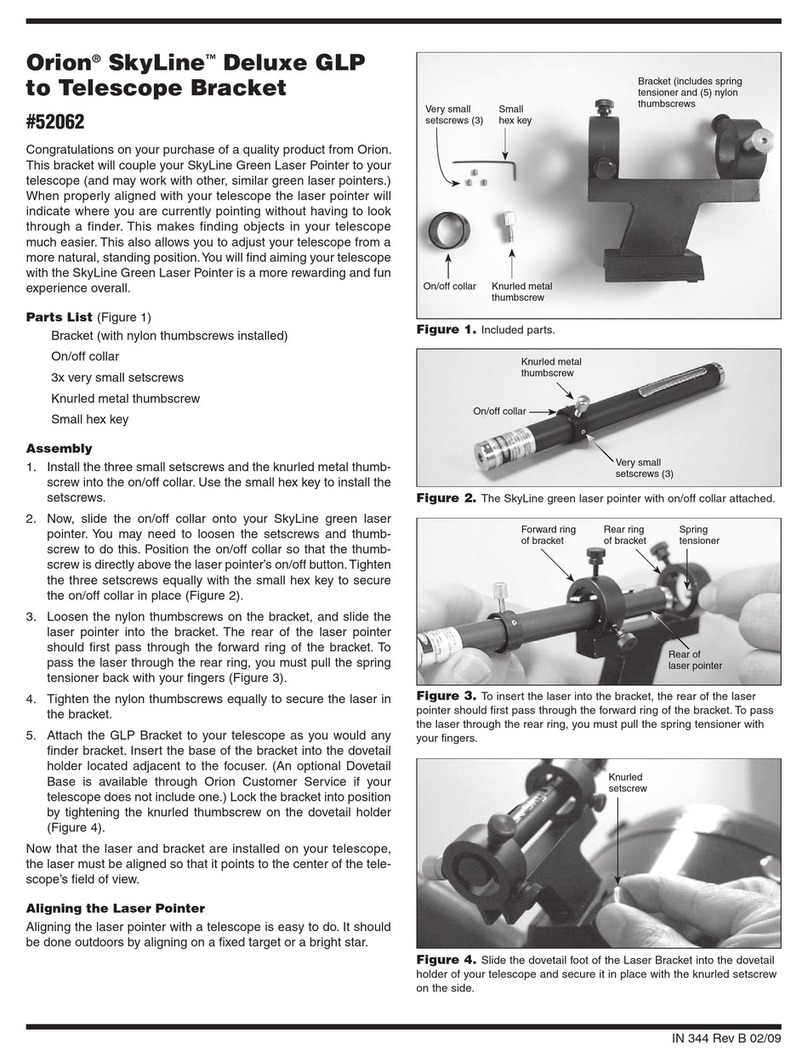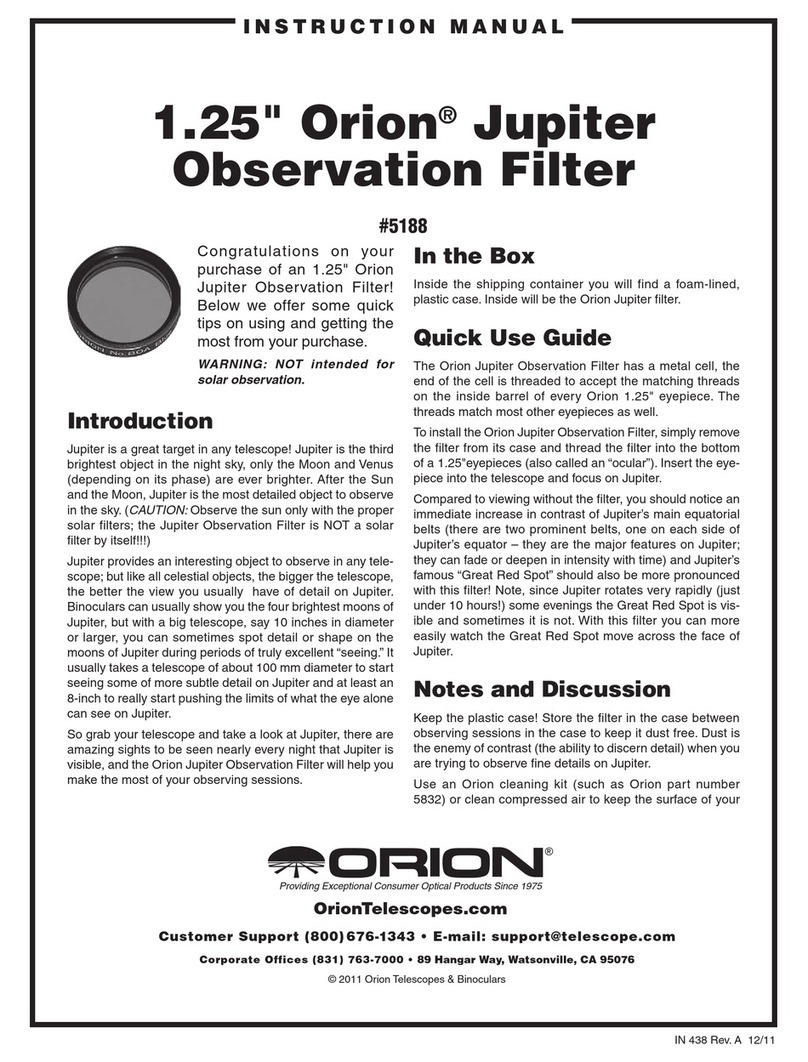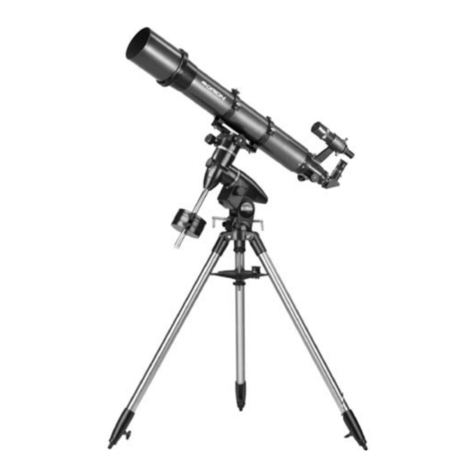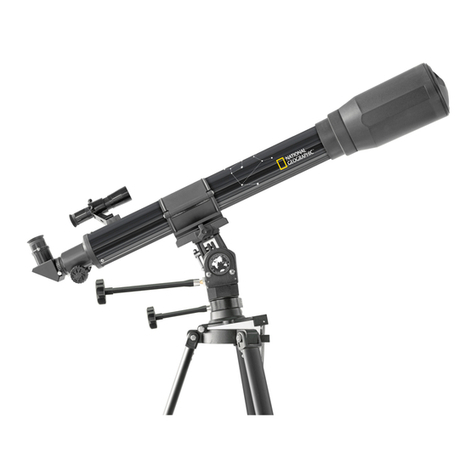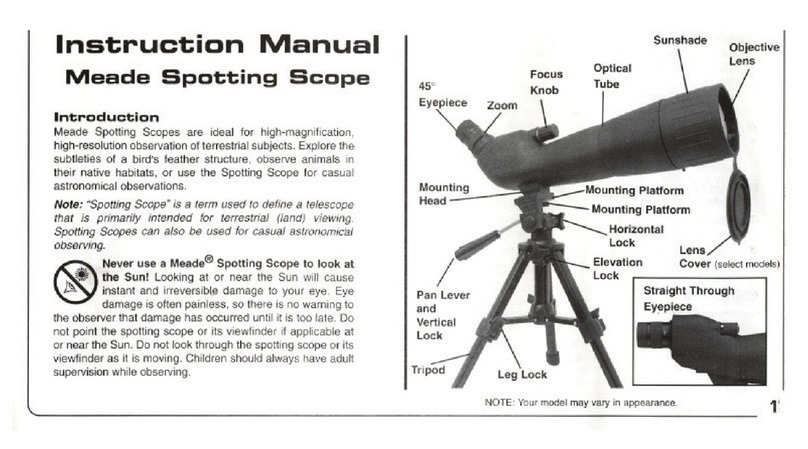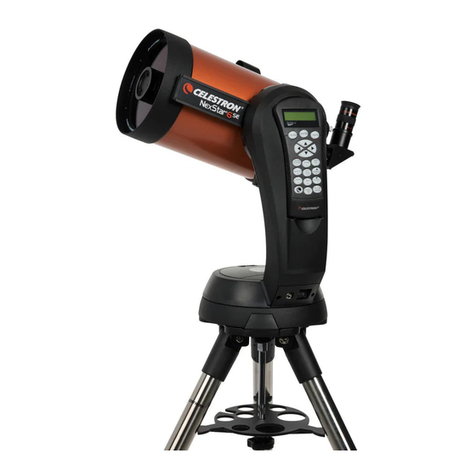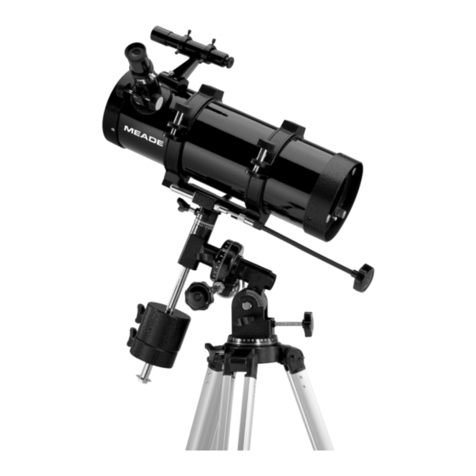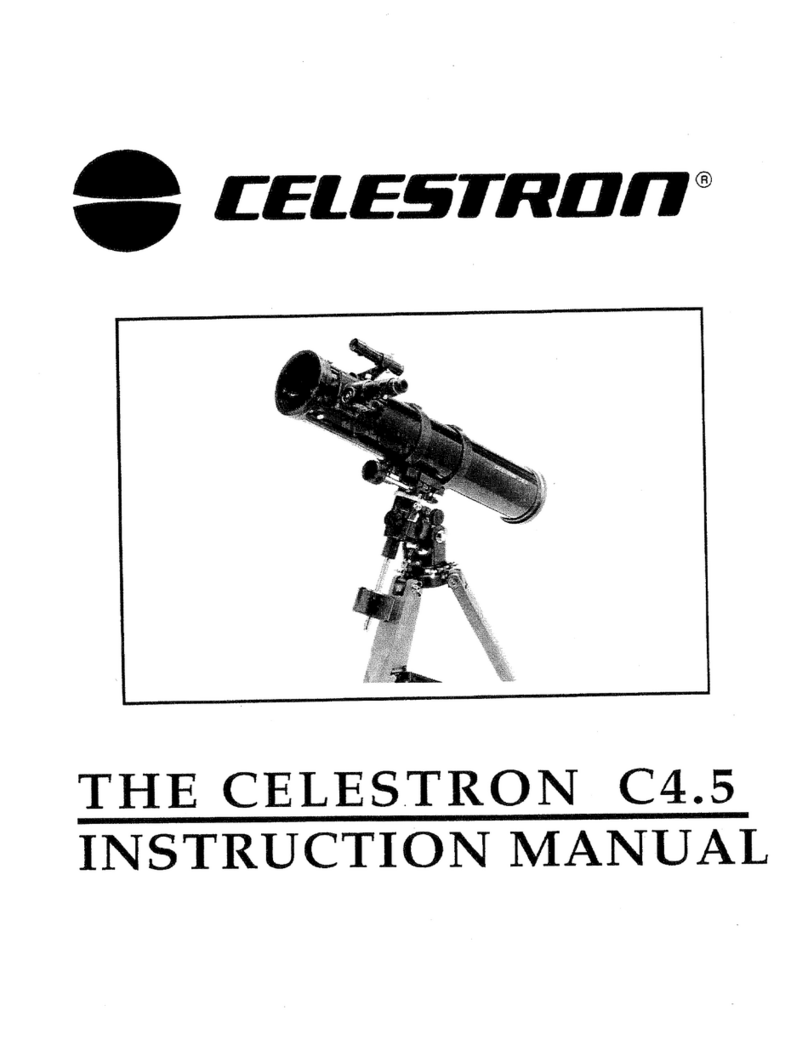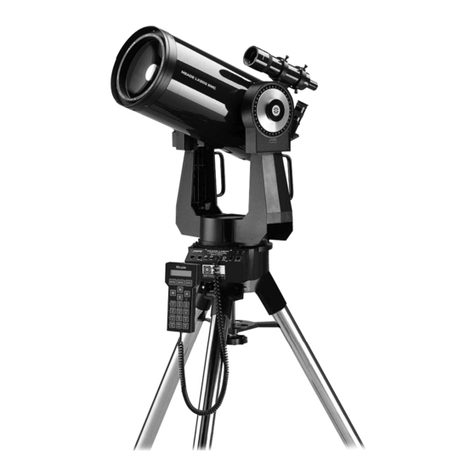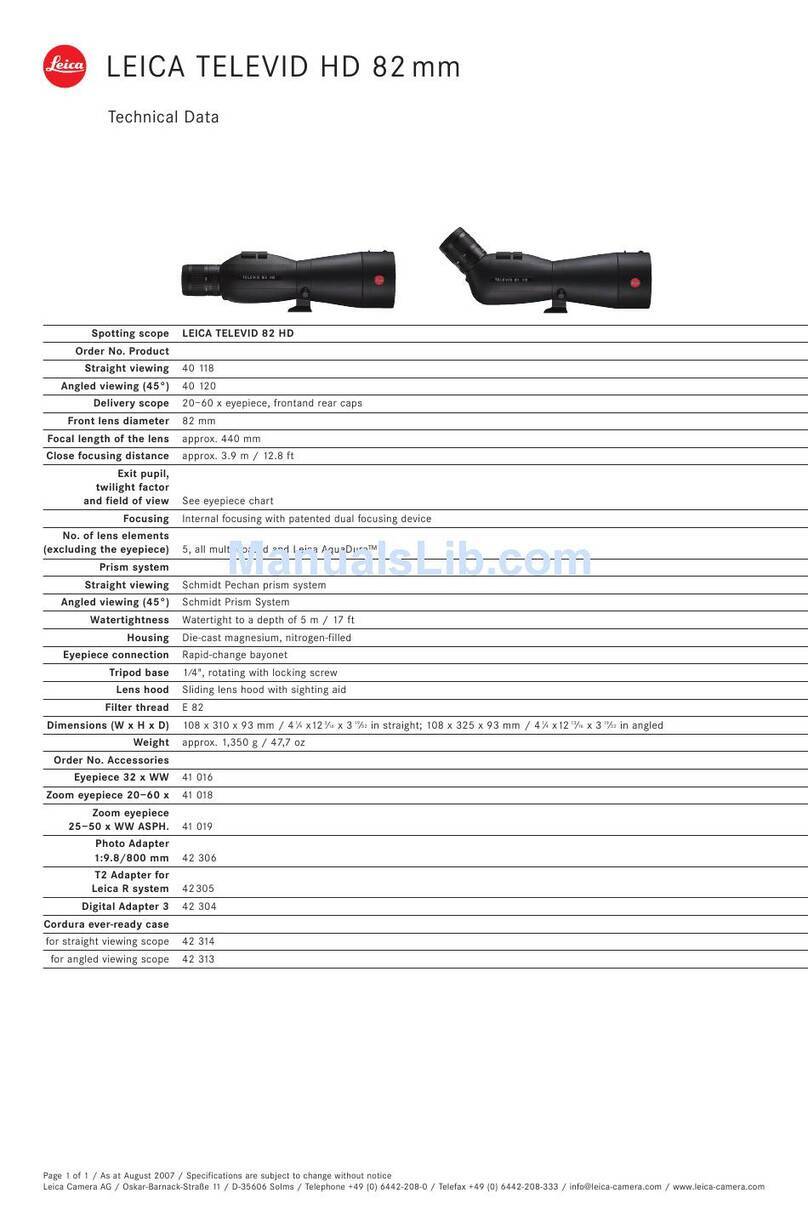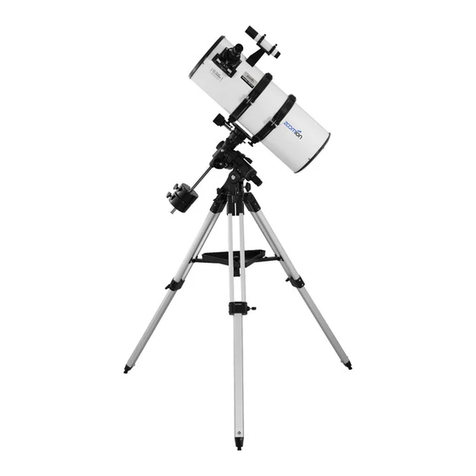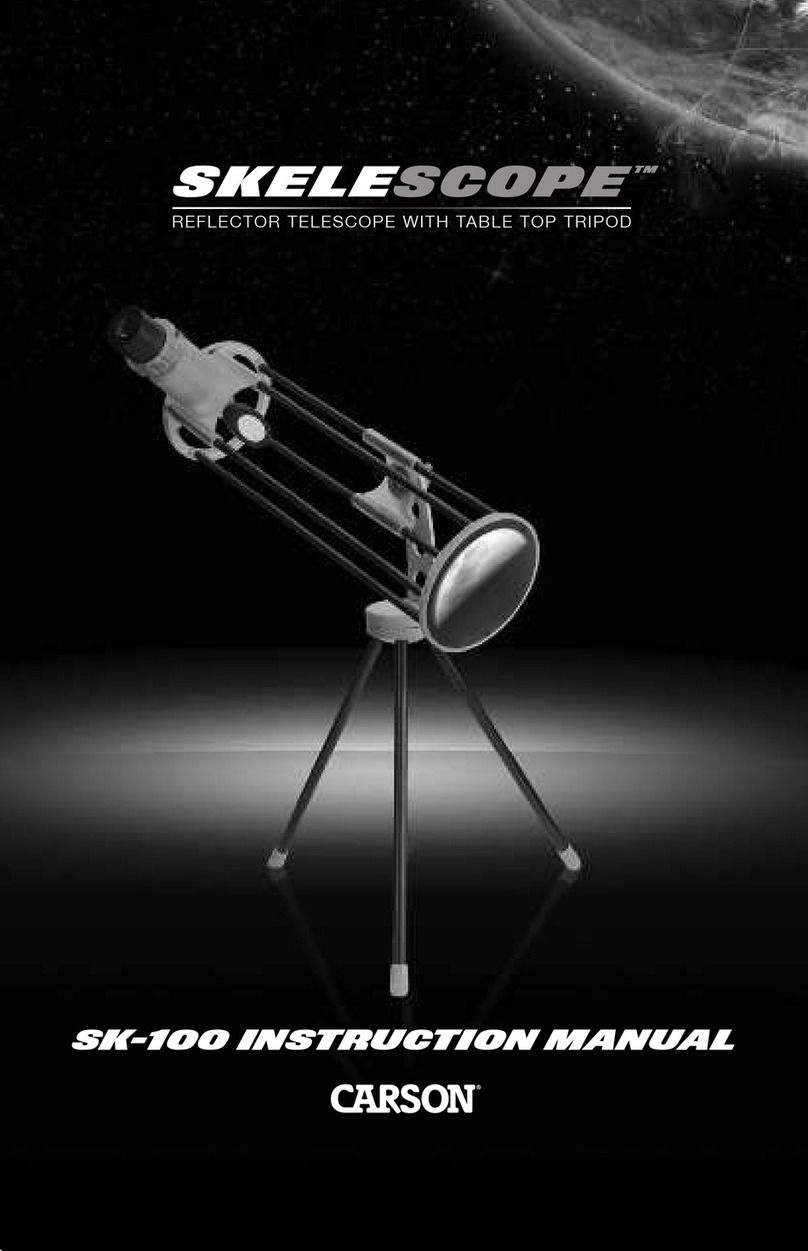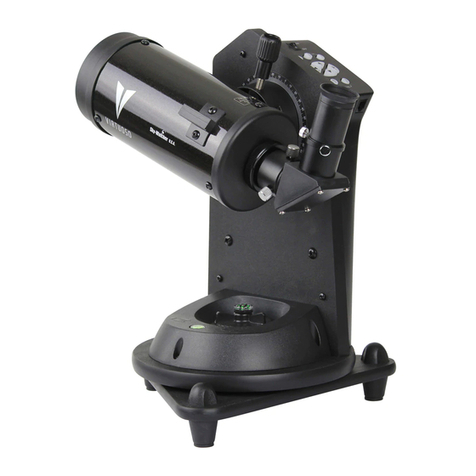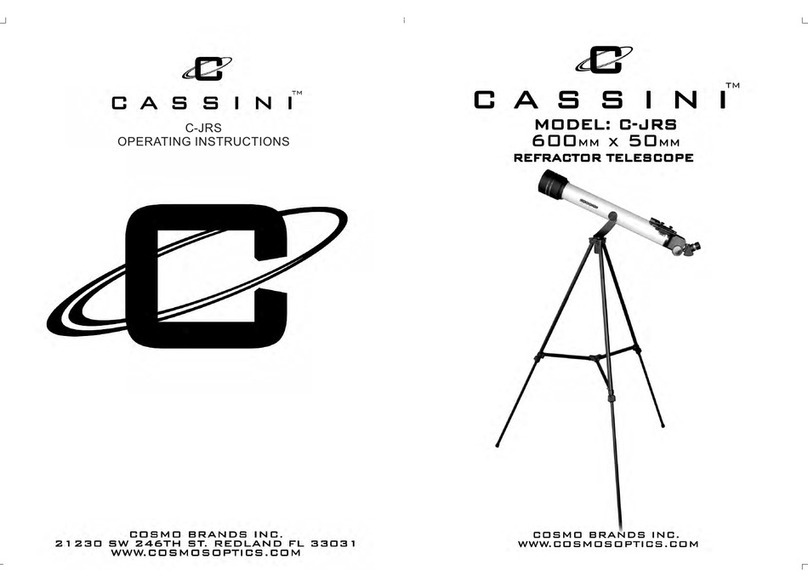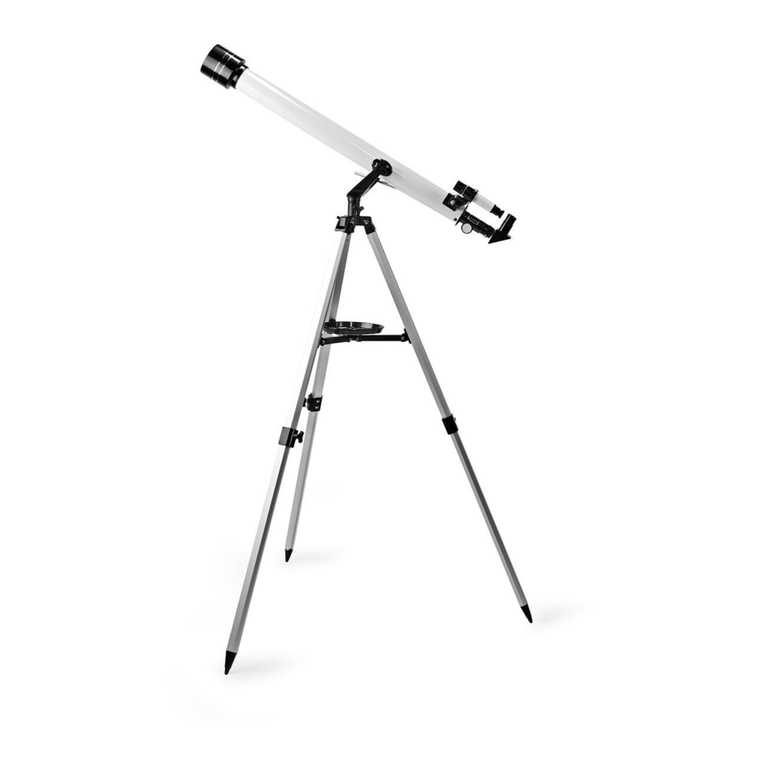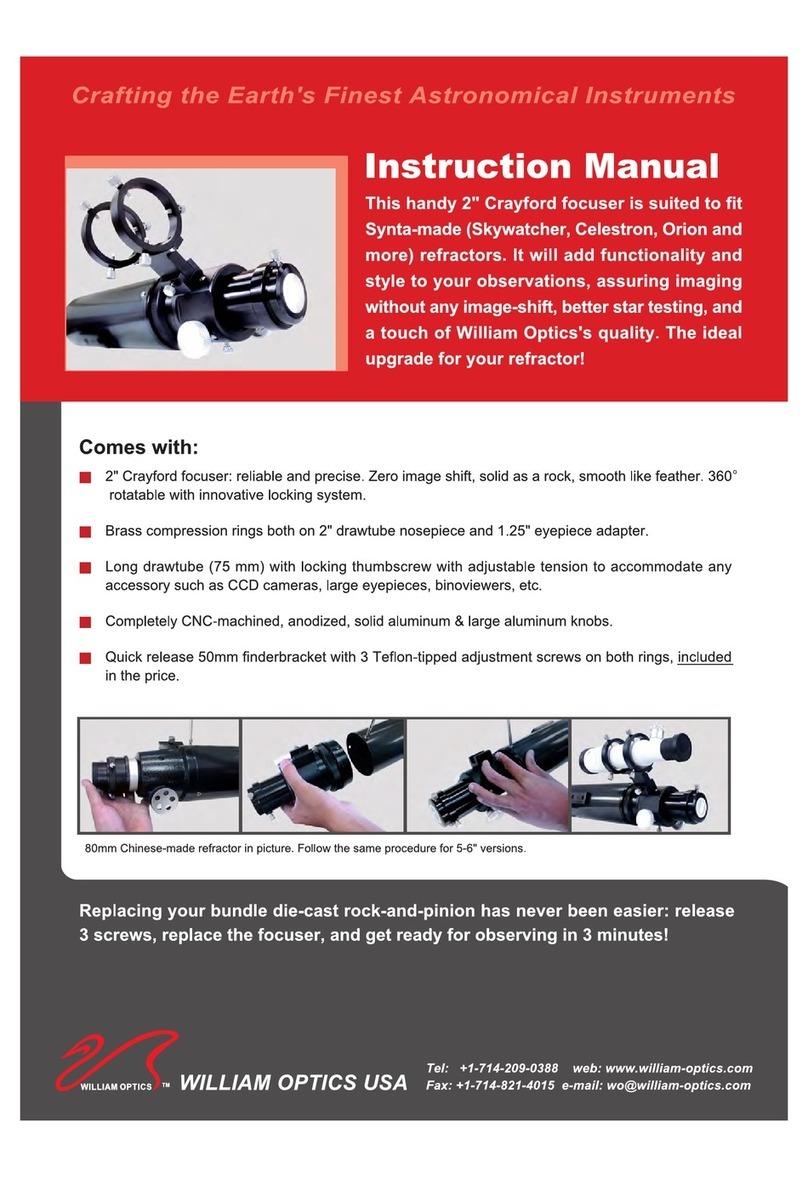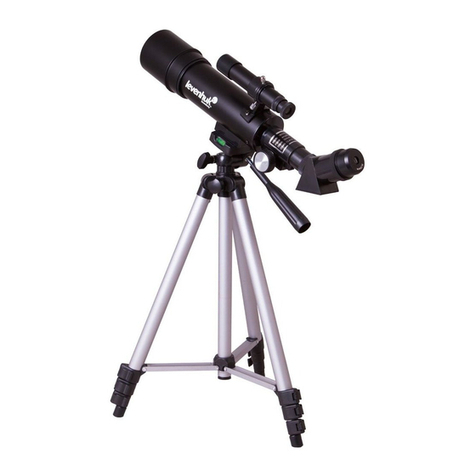Objects to Observe:
The Moon is one of the easiest and most interesting targets to view with the telescope.
Lunar craters, “seas”, and even mountain ranges can all be clearly seen from an
average distance of 238,000 miles away! With its ever-changing phases, you’ll get a
new view of the Moon every night it’s up. Make sure to observe the Moon when it is
well above the horizon to get the sharpest images. The best time to observe is during a
partial phase, that is, when the Moon is not full. During partial phases, shadows are
cast on the surface which reveals more detail, especially right along the border
between the dark and light portions of the disk (called the “terminator”).
If the Moon is too bright, or you want a bit more contrast, remove the small plug from
the dust cover and put the cover back on the telescope. This is called “stepping down”
and reduces the light hitting your eye.
Planets do not stay at “fixed” locations like the stars do. To find them you should
refer to the Sky Calendar (telescope.com), or to charts published monthly in
Astronomy, Sky & Telescope, or other astronomy magazines and web sites. Venus,
Jupiter, and Saturn are the brightest objects in the sky after the Sun and the Moon.
Stars: Even powerful telescopes cannot magnify a star to appear as more than a point
of light. You can, however, enjoy the different colors of the stars and locate many
pretty double and multiple stars. Look at the middle star in the handle of the Big
Dipper, Mizar. It is really two stars very close together. Being able to see the two
stars separate is called “Star Splitting”. The gorgeous two-color double star, Albireo,
in Cygnus, is a favorite. Defocusing a star slightly can help bring out its color.
Deep-sky objects: Under dark skies, you can see lots of fascinating deep-sky objects,
including nebulas, star clusters, and a variety of different types of galaxies.
Most deep-sky objects are very faint, so it is important that you find an observing site
well away from light pollution. Take plenty of time to let your eyes adjust to the
darkness. Do not expect these subjects to appear like the photographs you see in books
and magazines; many will look like dim gray smudges. As you become more
experienced and your observing skills get sharper, you will be able to ferret out more
and more subtle details and structure.
Star clusters are particularly pretty, usually bright, and easy to see.
